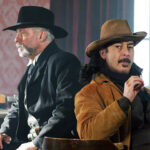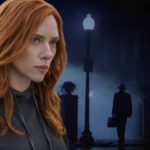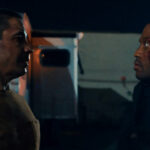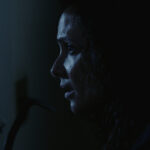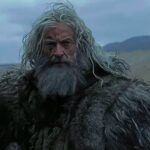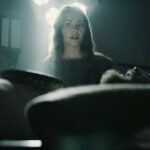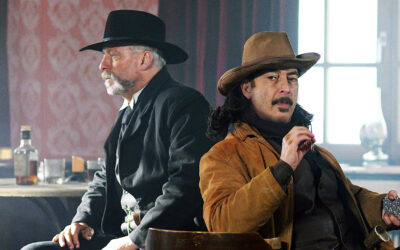Horror movies have a unique way of tapping into our primal fears, using a combination of storytelling, atmosphere, and technical prowess to leave an indelible mark on audiences. The most impactful scenes in classic horror films not only scare us in the moment but linger in our minds long after the credits roll. These moments are often the result of a masterful blend of cinematography, sound design, and narrative tension.
A closer look at iconic horror scenes
The essence of horror often lies not in the explicit depiction of terror but in the build-up and release of tension. Let’s dive deep into how certain films have masterfully created some of the most unforgettable horror sequences.
The sinister role of transportation in horror
Transportation in horror films often acts as more than just a means to move characters from one point to another; it becomes a critical element in building suspense, isolation, and, ultimately, terror. This motif can serve as a metaphor for a journey into the unknown or become a haunted element in its own right. The precision and reliability seen in the world of Professional Transportation of Less-than-truckloads offered by Divine Enterprises contrast sharply with the unpredictable and often doomed nature of transportation in horror cinema, illustrating the fine line between safety and peril on the road.
- Haunted Vehicles: “Christine” (1983) showcases a car with a mind of its own, turning a symbol of freedom into one of fear.
- Isolated Journeys: In “The Hills Have Eyes” (1977), a family’s road trip detour leads to a nightmare of isolation and danger, highlighting the vulnerability inherent in travel.
- Doomed Expeditions: “Event Horizon” (1997) portrays a rescue mission in space that uncovers unspeakable horrors, illustrating how transportation to the unknown can become a journey into fear.
- Terrifying Transits: “Train to Busan” (2016) leverages the confined space of a train during a zombie outbreak to amplify tension, showcasing how a routine journey can turn into a desperate fight for survival.
These films exploit the concept of transportation to explore themes of isolation, vulnerability, and the journey into the unknown, crafting memorable moments of horror that remind us of the fine line between the mundane and the terrifying.
The power of sound and silence
Before delving into specific scenes, it’s crucial to understand how horror filmmakers use sound to amplify fear.
- “Psycho” (1960): The shower scene is iconic, not just for its visual shock but for Bernard Herrmann’s screeching violin score, which heightens the terror.
- “The Exorcist” (1973): The unsettling use of Mike Oldfield’s “Tubular Bells” sets a chilling tone that complements the film’s visual horror.
- “A Quiet Place” (2018): Here, the absence of sound, punctuated by sudden loud noises, plays a key role in building suspense and fear.
These examples show how sound design is not just an accompaniment but a central component of horror filmmaking.
Cinematography that chills to the bone
The way a scene is shot can significantly affect its impact on the viewer. The use of lighting, camera angles, and movement all play a role in creating a sense of unease and terror.
- “Halloween” (1978): The use of first-person camera angles puts the audience in the shoes of the killer, creating an uncomfortably intimate sense of dread.
- “The Shining” (1980): Stanley Kubrick’s use of steady, symmetrical shots creates an eerie, otherworldly atmosphere that amplifies the psychological horror.
- “Nosferatu” (1922): The interplay of light and shadow in this silent classic creates a haunting visual style that has influenced countless films.
These films demonstrate that effective cinematography can turn ordinary settings into nightmarish landscapes.
The role of narrative in amplifying fear
While technical elements are crucial, the narrative context of a scene significantly influences its effectiveness in eliciting fear.
- “Jaws” (1975): The fear of the unseen shark is built up through the victims’ perspectives, making the eventual attacks all the more terrifying.
- “The Blair Witch Project” (1999): The film’s found-footage style and the characters’ growing desperation amplify the horror of the unseen threat.
- “Hereditary” (2018): The gradual unraveling of the family’s history and the slow reveal of the supernatural threat create a deeply unsettling narrative.
These films illustrate how a well-crafted story can enhance the horror of a scene, making it unforgettable.
Conclusion
The most terrifying moments in horror films are a product of meticulous craftsmanship. Filmmakers use sound, cinematography, and narrative to create scenes that resonate with our deepest fears. As we’ve explored some of the genre’s most iconic moments, it’s clear that the art of horror filmmaking is much like the precise handling of cargo by experts in transportation—both require a keen attention to detail and a commitment to delivering a profound impact.
In the world of horror, these techniques combine to leave a lasting impression on fans, proving that the true power of a horror film lies in its ability to evoke emotion and create an atmosphere of suspense and terror. Whether it’s through the shriek of a violin, the shadowy depths of a dimly lit corridor, or the slow build of narrative tension, classic horror films continue to captivate and terrify audiences, making them an enduring part of cinematic history.
